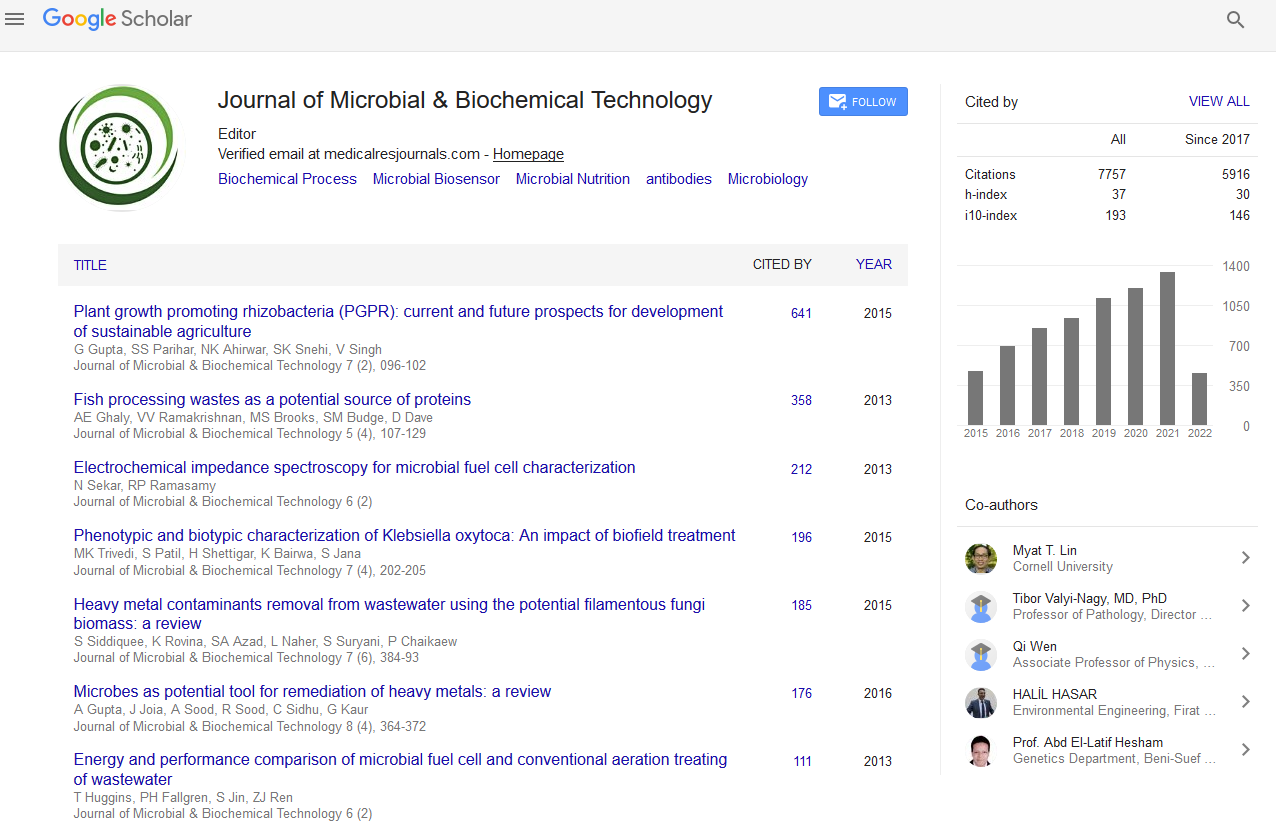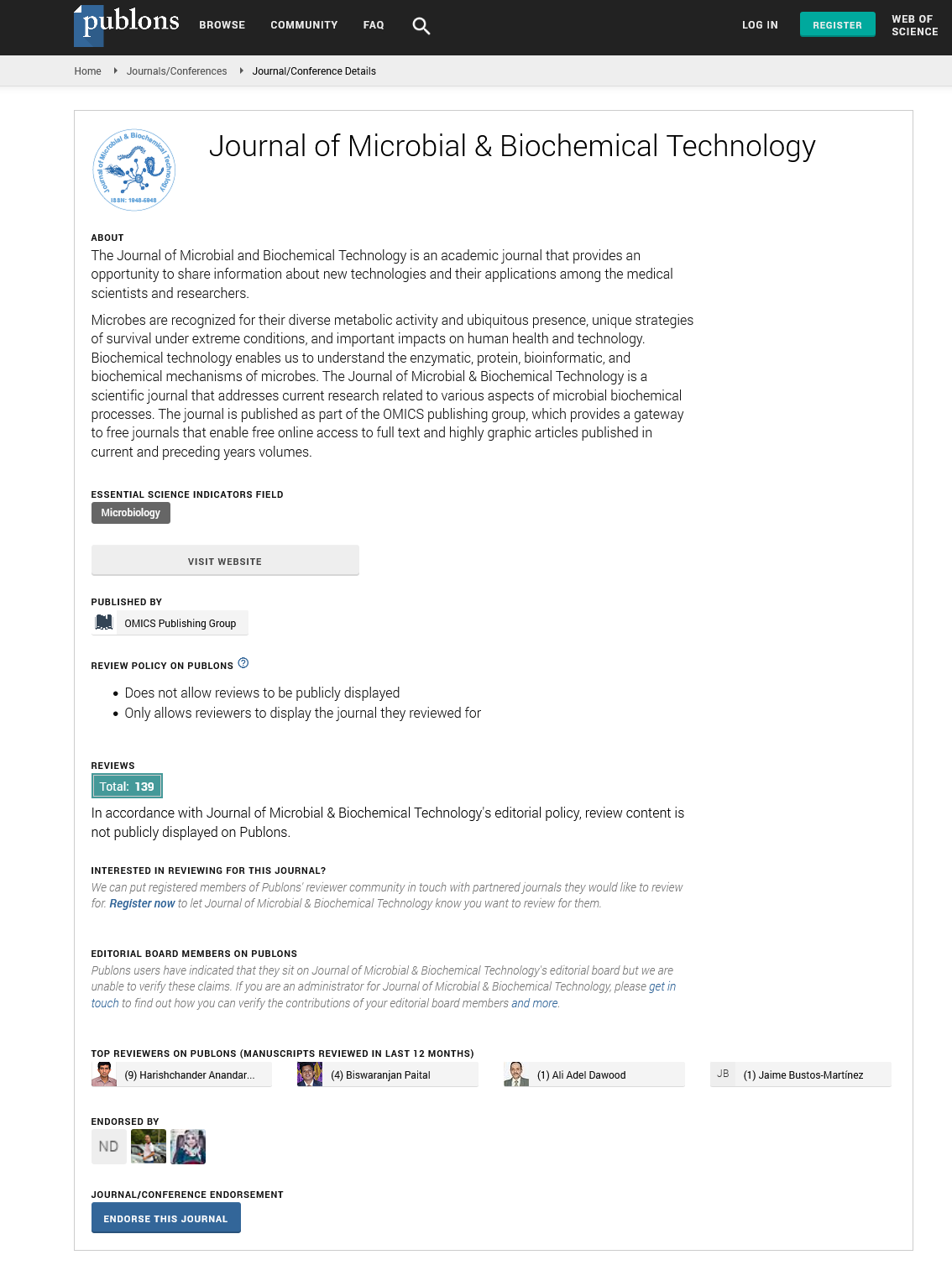PMC/PubMed Indexed Articles
Indexed In
- Academic Journals Database
- Genamics JournalSeek
- Academic Keys
- JournalTOCs
- China National Knowledge Infrastructure (CNKI)
- Scimago
- Access to Global Online Research in Agriculture (AGORA)
- Electronic Journals Library
- RefSeek
- Directory of Research Journal Indexing (DRJI)
- Hamdard University
- EBSCO A-Z
- OCLC- WorldCat
- SWB online catalog
- Virtual Library of Biology (vifabio)
- Publons
- MIAR
- University Grants Commission
- Geneva Foundation for Medical Education and Research
- Euro Pub
- Google Scholar
Useful Links
Share This Page
Journal Flyer

Open Access Journals
- Agri and Aquaculture
- Biochemistry
- Bioinformatics & Systems Biology
- Business & Management
- Chemistry
- Clinical Sciences
- Engineering
- Food & Nutrition
- General Science
- Genetics & Molecular Biology
- Immunology & Microbiology
- Medical Sciences
- Neuroscience & Psychology
- Nursing & Health Care
- Pharmaceutical Sciences
Abstract
Microbes as Potential Tool for Remediation of Heavy Metals: A Review
Abhijit Gupta, Jyoti Joia, Aditya Sood, Ridhi Sood, Candy Sidhu and Gaganjot Kaur
Environmental pollution caused by heavy metals has received increasing attention worldwide. The recalcitrant and tenacious nature of heavy metals leads to severe threat to environment superiority and life of both plants and animals, counting serious diseases in humans. There exists a wider scope with stress on cost-effectiveness, suitability and sustainability of the techniques to mitigate the influence of environmental change, contamination of food products and biological systems, influence of anthropogenic activities on the environment, and exploration of the aforesaid prospects along with new ingenuities for the restoration of environment. Bioremediation is measured as one of the safer, cleaner, cost operative and environmental friendly technology for decontaminating sites which are contaminated with extensive range of pollutants which is due to the unawareness concerning production, use and disposal of hazardous materials. Bioremediation uses numerous agents such as bacteria, yeast, fungi, algae and higher plants as main tools in treating oil spills and heavy metals existing in the environment. An unceasing search for the new biological forms is essential to regulate increasing pollution and environmental problems faced by man residing in an area. As microorganism demonstrations wide range of mechanisms, there are still few mechanisms which are not known, consequently bioremediation is still measured as a developing technology. Thus, there is a vital need for us to review and amend the available options for environmental clean-up. The objective of this paper is to conduct a comprehensive review on various sources of bioremediation agents and their limitations in treating pollutants present in the environment.


